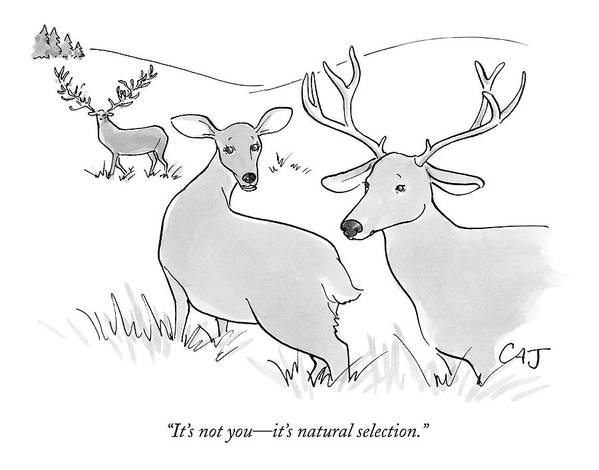
- Date: W45-W47
- Lecturer: Jean-Claude Walser
- Last Update: 21-Oct-2024
Population genetics is the scientific discipline that studies the mechanisms underlying genetic variation within populations, providing insights into the forces that shape the genetic composition of species over time. It examines how genes are inherited from one generation to the next, how they evolve, and how these processes contribute to the enormous diversity of life on Earth. By studying the distribution and frequency of genetic traits among groups of individuals, population genetics reveals the complex interplay of evolutionary forces such as natural selection, mutation, genetic drift and gene flow. Together, these forces control genetic diversity, determine how populations adapt to their environment, and ultimately drive evolutionary change.
Natural selection is perhaps the best known of these forces. It occurs when certain traits confer a reproductive or survival advantage, causing those traits to become more common in a population over time. A modern example can be seen in urban populations of white clover (Trifolium repens), a plant commonly found in cities and rural areas. In urban environments, some white clover populations have evolved to produce less cyanide, a defence mechanism that helps protect the plant from herbivores. In rural areas, where herbivores are more common, producing cyanide is a survival advantage. However, in cities, where the risk of freezing is higher due to lower temperatures and herbivores are less common, clover plants that produce less cyanide are more likely to survive. The reduced production of cyanide prevents the plant from suffering tissue damage when exposed to freezing temperatures, giving these urban populations an evolutionary advantage.
While natural selection favours beneficial traits, mutation introduces new genetic variants into a population. Although most mutations are neutral or harmful, some can be beneficial and provide the raw material for evolution. A notable example is the evolution of lactose tolerance in certain human populations. In societies where dairy farming became widespread, individuals with mutations that allowed them to digest lactose into adulthood had a survival advantage, leading to the spread of this trait.
Gene flow, or the movement of genes between populations, plays a key role in the introduction of new genetic material, counteracting genetic drift or selection. This is often seen in migratory species. For example, when wolves from different regions interbreed, genetic exchange helps maintain diversity and adaptability within the species, allowing the population to better respond to environmental changes.
In contrast, genetic drift refers to random changes in the frequency of genetic traits, particularly in small populations. A well-known example is the case of colour blindness in the population of Pingelap, a small atoll in Micronesia. In 1775, a typhoon and famine reduced the population to about 20 individuals. One of the survivors carried a genetic mutation for achromatopsia, a rare condition that causes total colour blindness. As the population grew from this small group, genetic drift increased the frequency of this mutation simply by chance. Today, around 10% of the Pingelapese population is affected, a rate far higher than the global average of 1 in 30,000 people. This example illustrates the founder effect, where random genetic traits become common in a population due to the small number of initial individuals, and shows how drift operates independently of selection.
More recently, population genetics has been instrumental in understanding human evolution. Genetic studies are revealing how ancient migrations, interbreeding with other hominins such as Neanderthals, and adaptations to different environments have shaped modern human populations. Traits such as skin colour, resistance to disease and adaptations to high altitude, as seen in Tibetan populations, are all the result of population genetic processes.
By studying these forces, population genetics provides a framework for understanding how species evolve, adapt and diversify. Whether studying the evolutionary history of humans, the genetic diversity of crop plants, or the evolution of dog breeds, population genetics provides a powerful lens through which to view the biological world.
- Johnson et al. (2015) Urbanization and the temporal homogenization of plant herbivore interactions. Science, 347(6221), 760-762.
- Santangelo et al. (2022) Urban environments drive microevolution in a cosmopolitan plant species. Science, 375(6581), 127-131.
- Kerr (2005) Achromatopsia on Pingelap Island: Crossing disciplines to explain the science and culture of an isolated genetic trait. Nature Reviews Genetics, 6(12), 957-964
Handouts
- TU 05.11.24 - Phenotypic Variation
- TH 07.11.24 - Hardy–Weinberg Principle / Genetic Drift / Effective Population Size
- TU 12.11.24 - Non-Random Mating / Mutation
- TH 14.11.24 - Migration / NaturalSelection
- TU 19.11.24 - Population Subdivision - F-statistics / Linkage Disequilibrium
- TH 21.11.24 - MPS
Extras
Assignments
It is up to you how you want to solve the assignment. You can solve them by hand and email me the scanned solutions. You can also use a Markdown document or even better R-Markdown documents. Here is a possible example.
Solutions:
- A1 - Allele Frequency / A1 - R Solutions
- A2 - Genetic Drift
- A3 - Effective Population Size
- A4 - Non-Random Mating
The deadline is Sunday 1 December 2024.
